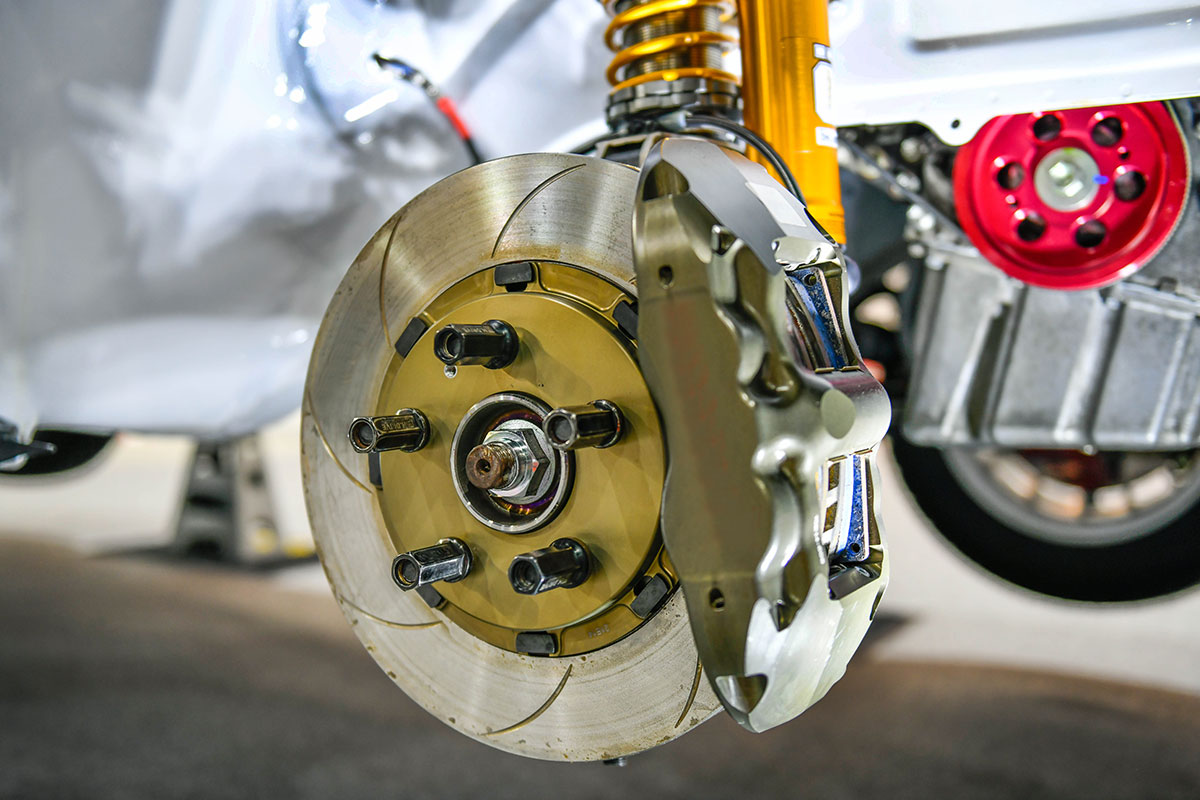If you’ve ever been driving and felt your brakes become spongy or unreliable, you’ll know how frightening it can be. Brake faults and failures are among the scariest and most dangerous car problems any driver can face.
Fortunately, there are steps you can take to look after your car’s brakes, as this guide will show.
Contents
Change the Pads on a Regular Basis
When you push on the brake pedal, you engage your car’s brake pads. Those pads clamp down on the rotors, which are linked to the wheels, generating friction to slow the speed at which the wheels turn. Over time, the pads wear down, and need to be changed on a relatively regular basis.
It’ll usually say in your owner’s manual exactly how often your pads need replacing. Typically, it’s between every 20,000 and 40,000 miles. But it depends on a bunch of factors, like how aggressively you drive and the amount of weight in your car.
If you hear any kind of squealing or grinding noise when you brake, it’s probably time to get the pads swapped out for fresh ones. Shaking and shuddering while braking is another sign that the pads are all worn out. Head to a garage and get some fresh ones fitted.
Check and Replace Fluid as Needed
Coolant. Oil. Windshield washer fluid. There are lots of essential liquids coursing through the veins of the average vehicle, helping to keep all the systems up and running. Brake fluid is another one, and it’s crucial for helping the brake system work correctly.
However, if you have any leaks in your system, the levels of brake fluid can gradually run down. Similarly, if your brake pads get excessively worn out that can also have an impact on the amount of brake fluid in your car.
Luckily, like most other car fluids, you can check on brake fluid levels whenever you like. Just pop the hood and check the brake fluid reservoir. That reservoir also usually has clear instructions on top for refilling, as well as marked “Minimum” and “Maximum” fluid level lines on the side.
Check that the fluid is between the two lines. If it’s too low, you can add more. Also check the color and consistency of the fluid. It should be quite clear, with a slight yellow hue. If it’s dark or grainy, you’ll have to flush it out and replace it.
Carry Out Regular Inspections
It’s also recommended to check up on your brake system with regular visual inspections. That’ll help you spot the signs of damage or degradation as soon as possible and take the right next steps – like getting new pads.
We’ve already spoken about checking the brake fluid, and that’s always a good place to start. Make sure the fluid is clean and clear, and that the right amount is present. Then, move on to checking the brake pads.
On most cars, you should be able to see the pads through the gaps in the wheel. Get a flashlight to help you, and see how thin the pads look. If they’re thin – under 1/4” – they’ll most likely need replacing.
For a deeper inspection, you can remove the wheel and check the pads more thoroughly. That can involve quite a lot of work, but it’ll give you the best view of your car’s pads and allow you to check other parts, like calipers and rotors. Only do so if you’re confident in your auto knowledge and skills.
Drive Safely and Consistently
Ultimately, one of the easiest ways to maintain your brakes is to concentrate on how you drive. As stated earlier on, driving behavior is one of the big factors that influences how quickly brake pads wear down. It can have a direct impact on how likely you are to encounter brake-related issues.
So, try to drive safely, sensibly, and consistently. Use your brakes with care, trying to avoid any aggressive, harsh, or sudden stops. Maintaining a steady speed and sticking to the limit of the roads will help you.
Also, always keep a good distance from the car in front and scan the road ahead for lights, stop signs, and hazards. That should give you more time to apply your brakes gently, should you need to stop or slow down.
Avoid Overloading Your Vehicle
One of the worst things you can do for your car’s brake system is to overload it. When you carry too much weight, it puts extra pressure on the brakes. They have to work even harder to slow down the vehicle, leading to much faster wear and tear on the pads.
So, try to avoid loading up your car too much. Check your owner’s manual to see how much weight your car can handle, and always stay under that limit. If you need to transport heavy items, try to seek alternative options, like hiring a van or asking friends and family to share the load.
Of course, there may be times when you can’t avoid having a lot of weight in your car. You might be moving house and have a lot of boxes and items to load up, for instance. But always try to stick under your car’s recommended weight limit, and drive extra prudently when carrying lots of weight.
Don’t Ignore the Warning Signs
Finally, make sure you look and listen to your car. Pay attention to the signals it gives you. This includes weird smells, a shaking or shuddering motion, an unusual sound, or even a bright warning light on the dashboard.
Those are all the vehicle’s ways of letting you know that something is wrong. If you notice one of those signs or signals, don’t ignore it. It might only be a minor issue at first, but often those minor issues rapidly develop into much bigger problems.
It’s much better to act fast and respond early if you think that something’s up with your brakes. Getting fresh pads fitted in time or flushing out your brake fluid could help you avoid serious or even life-threatening issues later on.


